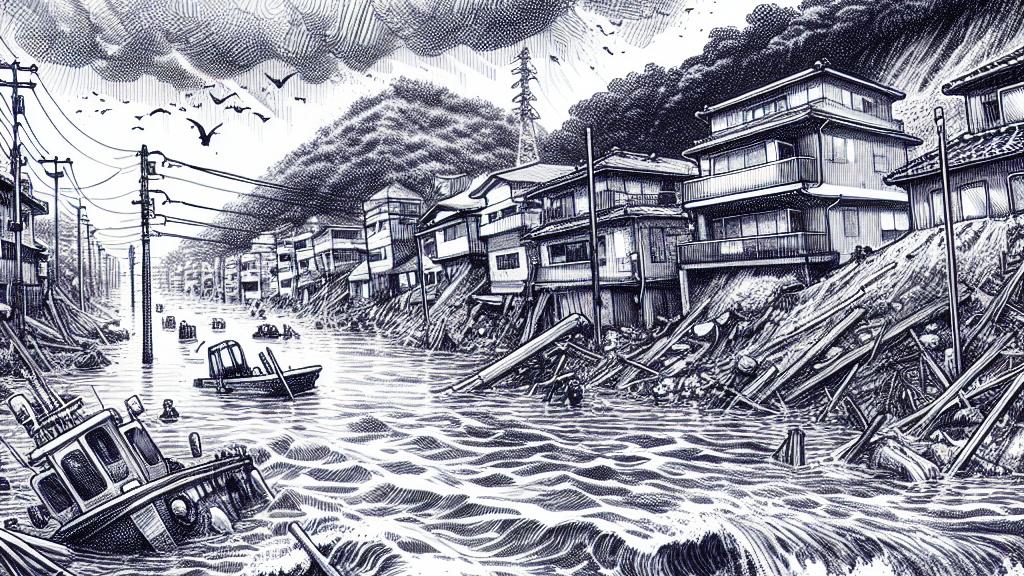Heavy Rain Damage in Ishikawa: Six Dead and Many Missing
Overview
- Ishikawa Prefecture has been submerged under unprecedented floods, resulting in tragic loss of life.
- Currently, six deaths and two individuals remain missing, capturing the community's anguish.
- Over 115 isolated communities face scarcity of vital resources, amplifying the urgency for aid.

Ishikawa's Unprecedented Weather Catastrophe
In a dramatic turn of events, Ishikawa Prefecture, which sits along Japan's picturesque west coast, has endured catastrophic rainfall that shattered records over the past few weeks. Particularly in the beautiful cities of Wajima and Suzu, the rain pounded relentlessly, with astonishing totals exceeding 120 mm in a single hour. This deluge brought about devastating consequences; as of September 23, 2024, the heartbreaking toll stands at six confirmed deaths, which include four workers tragically lost to a landslide on September 21. Additionally, two elderly women have been found in flooded surroundings. Such tragedies resonate deeply within these close-knit communities, prompting urgent and grave warnings from emergency services about the risk of further landslides and flash floods—a reminder of nature's raw power.
Desperate Search and Rescue Operations Underway
As search and rescue operations unfold amidst this chaos, the scene is nothing short of heart-wrenching. Crews are tirelessly scouring the landscape, hoping to find two individuals who were swept away by the quickly rising waters, their loved ones anxiously holding onto hope. Moreover, eight others are still reported missing in the devastated regions around Wajima and Suzu. So far, about ten people have been successfully evacuated, showcasing the determination of local authorities. However, the grim reality is that countless residents remain trapped in 115 isolated communities, cut off from help by treacherous roads and landslides. Local governments are mobilizing efforts to assess damages and organize the delivery of essential supplies, yet persistent gaps in electricity and clean water access turn the situation dire. The urgency for timely aid has never been more critical; families struggle to meet their basic needs in the aftermath of nature's fury.
Resilience in the Face of Long-Term Challenges
As the grim aftermath of this severe weather unfolds, vital questions linger about the long-term recovery in Ishikawa's afflicted areas. The challenges are compounded—these communities are still healing from a previous earthquake that struck not long ago. With much of the infrastructure damaged and transportation severely limited, relief operations are crucial yet continue to be hindered. The shift from addressing immediate disaster needs to planning for long-term recovery underscores the pressing demand for comprehensive disaster preparedness strategies in regions susceptible to such climatic extremes. Remarkably, the resilience displayed by residents has shone through this adversity; neighbors bond together, sharing resources and support, all while yearning for basic necessities such as food, clean water, and safe shelter. This sobering reality serves not only as a poignant reflection of the vulnerabilities within disaster management strategies but also highlights the incredible strength and solidarity of the human spirit during tough times.

Loading...